Efficiency and innovation are essential, especially in marketing content creation. With audiences more discerning than ever, marketers are under relentless pressure to produce engaging, high-quality content to supercharge their inbound marketing efforts. This is where digital content management—supported by various content creation tools like document management and AI—come into play to enhance and streamline the creative workflow.
These tools offer features ranging from collaborative editing and routing documents to template management and automated publishing. With these innovative solutions, content creators can streamline their workflows.
Content Creators can spend more time refining ideas and strategies rather than getting bogged down by manual processes. Below, we explore how digital content management tools streamline content creation and their impact on enhancing creative workflows.
Why Business Leaders Should Invest in Content Management Tools

Influencers and business professionals rely on credibility and expertise to influence their industry. Content management tools are essential for streamlining their content creation process and ensuring every piece of content aligns with their business objectives.
Here's how these tools empower professionals to amplify their thought leadership:
1. Facilitating Seamless Collaboration Across Teams
The modern business landscape thrives on collaboration. Digital content management tools such as Google Docs and Microsoft 365 enable real-time editing, commenting, and version control, ensuring teams across different locations can contribute to content effortlessly. This allows more thought leaders to get involved in the content creation process, giving articles, social media posts, and other online content more viewpoints from more experts without having to dedicate a ton of time to version control.
Best Practice: Implement role-based access to streamline content approvals, ensuring senior leaders can review and provide input without disrupting the workflow.
2. Enhancing Content Consistency and Brand Voice
Maintaining a consistent brand voice across multiple content pieces is crucial for thought leadership. Tools like Notion and Dropbox Paper provide structured templates that help teams standardize messaging and design across all documents. By using these templates as a baseline, you can customize and tweak your content creation process for things like blog posts, website copywriting, and social media posts without having to start from scratch.
Actionable Tip: Create pre-designed document templates with predefined brand guidelines to ensure uniformity in reports, whitepapers, and presentations.
3. Automating Workflows for Maximum Efficiency
Business leaders cannot afford to waste time on manual document management. AI-driven content management tools such as Adobe Acrobat and DocuSign offer automation features that accelerate approval processes, content formatting, and even publishing.
Example: Use workflow automation in HubSpot or Zapier to auto-publish content drafts from Google Docs directly to CMS platforms like WordPress or HubSpot.
4. Leveraging AI for Enhanced Content Creation
Artificial intelligence is revolutionizing content creation. AI-powered content management tools such as Grammarly and Jasper.ai assist in refining content, ensuring grammatical accuracy, and even generating industry-specific insights to boost thought leadership that writers can use to build off of. Keep in mind that AI tools should be used as just that, tools, and not as a replacement for writers and editors. If there’s one thing AI writing tools cannot do, it’s replace the unique human thoughts and insights of writers who take the time to do research on a topic—so be sure that you’re verifying all information before publishing.
Choosing the Right Content Creation Tools for Your Business

Selecting the ideal document tools depends on business goals, team size, and industry needs. Here's a breakdown of the most effective tools for different functions:
|
Function |
Recommended Tools |
|
Real-time Collaboration |
Google Docs, Microsoft 365, Notion |
|
Content & Document Organization |
Dropbox Paper, Evernote, OneNote |
|
AI-Powered Editing & Optimization |
Grammarly, Jasper.ai, Hemingway Editor |
|
Approval & Compliance Management |
DocuSign, Adobe Acrobat, PandaDoc |
|
Automated Publishing & Integration |
HubSpot CMS, WordPress, Zapier |
Streamlined Collaboration
Digital content management software brings everyone to the same page—literally. Tools like Google Docs and Microsoft OneDrive allow multiple team members to edit, comment on, and review documents in real-time.
With features like real-time editing, commenting capabilities, and version tracking, teams can collaborate regardless of their physical locations. This immediate exchange of ideas and feedback accelerates the content creation process and enhances the quality of the final output.
Consistency and Brand Alignment
Maintaining a consistent brand voice and style across all your content is non-negotiable for effective marketing. Digital content management tools facilitate this by offering template management features. These templates can be customized to reflect your brand's guidelines, ensuring that every piece of content aligns with your brand identity.
Efficiency Through Automation
The beauty of digital content management systems lies in their ability to automate mundane and repetitive tasks. From formatting to publishing, these tools can take over tasks that traditionally consume a significant portion of a content creator's time. This automation frees up creative minds to focus on what they do best—creating compelling content.
Advantages of Digital Document Tools in Enhancing Creative Workflows

These are the key benefits that make digital document tools an essential component of any creative workflow:
Improving Real-Time Collaboration and Efficiency
Content management tools facilitate seamless teamwork, allowing multiple users to edit and review a single document together, no matter where they are. This capability accelerates the development and refinement of ideas.
Some content creation tools like DocFly have features that allow users to sign documents online. These tools streamline workflows and eliminate the need for printing, manual signing, scanning, and sending documents back and forth.
Streamlining the Revision Process
With effective digital content management, every edit, comment, and suggestion is recorded, allowing you to navigate revisions without losing sight of the original document. This transparency in the editing process improves the accuracy of revisions and maintains the document's integrity.
Ensuring Consistent Branding Across Documents
Ensuring your content consistently reflects your brand's voice and style can be challenging. Digital document tools simplify this task through customizable templates and style presets. By standardizing the look and feel of your documents, you ensure that every piece of content reinforces your brand identity.
Improving Organization
Digital content management tools have robust organization features, such as tagging, categorizing, and advanced search options. These features make it easy to manage various documents and ensure that every piece of content is easily accessible.
Tips for Choosing and Embedding Digital Content Management Software in Your Workflow

Selecting and integrating the right digital content management tools into your marketing workflows is critical to achieving streamlined operations and enhanced creativity. Here are the best practices to guide you through this process:
1. Identify Your Needs
Start by outlining the specific challenges and needs of your content creation process. Whether it's improving collaboration, managing content schedules more efficiently, or ensuring consistency across your materials, understanding these requirements will help you identify the features most important to your team.
For example, if real-time collaboration is crucial, tools like Google Docs or Microsoft 365 may be the best options due to their robust co-editing features. If your priority is managing approvals and signing documents online, platforms like DocFly will streamline that process.
2. Evaluate Collaboration Features
Given the collaborative nature of content creation, select tools that facilitate easy sharing and real-time collaboration. Platforms like Trello and Asana integrate well with document tools like Google Drive and Dropbox Paper. These tools support version control and allow you to manage permissions and keep track of changes.
3. Consider Compatibility and Integration
Your chosen tools should integrate well with other software and platforms your team uses. These could include CRM systems, email marketing platforms, and social media management tools. For instance, Microsoft 365 integrates effortlessly with Outlook, Teams, and OneDrive, ensuring that your entire suite of productivity tools works in harmony.
4. Assess Ease of Use
Select user-friendly digital document tools that require minimal training. User-friendliness ensures all team members can quickly adapt to the new tools, making the transition smoother and reducing downtime.
5. Prioritize Security and Compliance
Opt for tools that offer robust security measures, including encryption, access controls, and secure sharing options. Adobe Acrobat is known for its advanced document security features, such as password protection and permissions settings, making it a reliable option for teams working with sensitive. Compliance with industry standards and regulations is also essential, particularly for organizations in highly regulated sectors.
6. Plan for Scalability
Choose tools that can grow with your team and adapt to changing marketing strategies. Scalability ensures the tool remains useful as your content creation needs to evolve. Choosing tools with content marketing automation features, like being able to make automatic global updates to multiple platforms at one time, can reduce workload and help ensure a seamless workflow even when you need to scale.
7. Pilot Before Full Integration
Before committing to a full rollout, conduct a pilot test with a small group of users. This approach allows you to gather feedback on the tool's performance and usability in a real-world context.
Common Hurdles in Implementing Digital Content Management Tools

Implementing digital content management tools in your marketing workflows can bring the following challenges:
- Resistance to change: It's natural for teams to resist new processes and tools, especially if they're comfortable with existing workflows. Overcome this by emphasizing the benefits of digital document tools.
- Integration with existing systems: Ensuring new digital document tools work seamlessly with your current software ecosystem can be daunting. Select tools that offer compatibility or can be easily integrated through APIs.
- Data security concerns: Address these concerns by choosing tools that adhere to industry-standard security protocols and offer features like encryption, access controls, and audit trails.
- Technical limitations: Some digital document tools may not have all the features your team needs or may offer them in a way that doesn't perfectly fit your workflows. When faced with technical limitations, look for workarounds or additional plugins that extend the tool's capabilities. Engage with the tool's customer support for solutions, or consider custom development if your budget allows.
- Managing costs: Start with a cost-benefit analysis to understand the potential ROI of integrating digital document tools. Consider starting with a scaled-down version or a free trial to evaluate effectiveness before committing to a full-scale implementation.
Upcoming Innovations in Digital Content Management
Digital content management is constantly evolving with emerging technologies set to revolutionize how businesses create, manage, and distribute content. Here are some of the most transformative innovations on the horizon:
AI-Powered Content Generation
Artificial intelligence is transforming content creation by offering tools capable of generating written content, graphic designs, and even video scripts. Expect AI capabilities to become more sophisticated, offering more personalized and contextually relevant content generation options.
Advanced Collaboration Platforms
Future digital document tools will offer even more advanced features for real-time teamwork, including virtual whiteboards and spatially aware document interfaces.
Enhanced Content Personalization
As the demand for personalized content grows, digital document tools will incorporate more advanced analytics and machine learning algorithms. These features will enable marketers to tailor content more precisely to different audience segments based on behavior, preferences, and engagement history.
Embrace Digital Content Management to Streamline Your Content Creation Workflow
Embracing digital content management tools will help you unlock the full potential of your content creation efforts. As you navigate the selection, integration, and utilization of these tools, focus on how they can enhance collaboration, streamline workflows, and elevate the quality of your marketing content.
Remember, the ultimate goal is to produce content that resonates with your audience, driving engagement and success in your inbound marketing strategies. Aim to stay ahead of the curve by anticipating future trends and being prepared to adopt innovations that align with your goals.
Ready to start building your digital marketing strategy? Reach out to us today to get started.

Emily Shaw
Emily Shaw is the founder of DocFly, an online PDF editor. As a software developer, she built the site from scratch and is responsible for its operations and continued growth. Previously, she studied engineering at the University of Hong Kong and mathematics at the University of Manchester. In her spare time, she enjoys hiking in the countryside, and spending time with her family.












2.png)
2.png)









